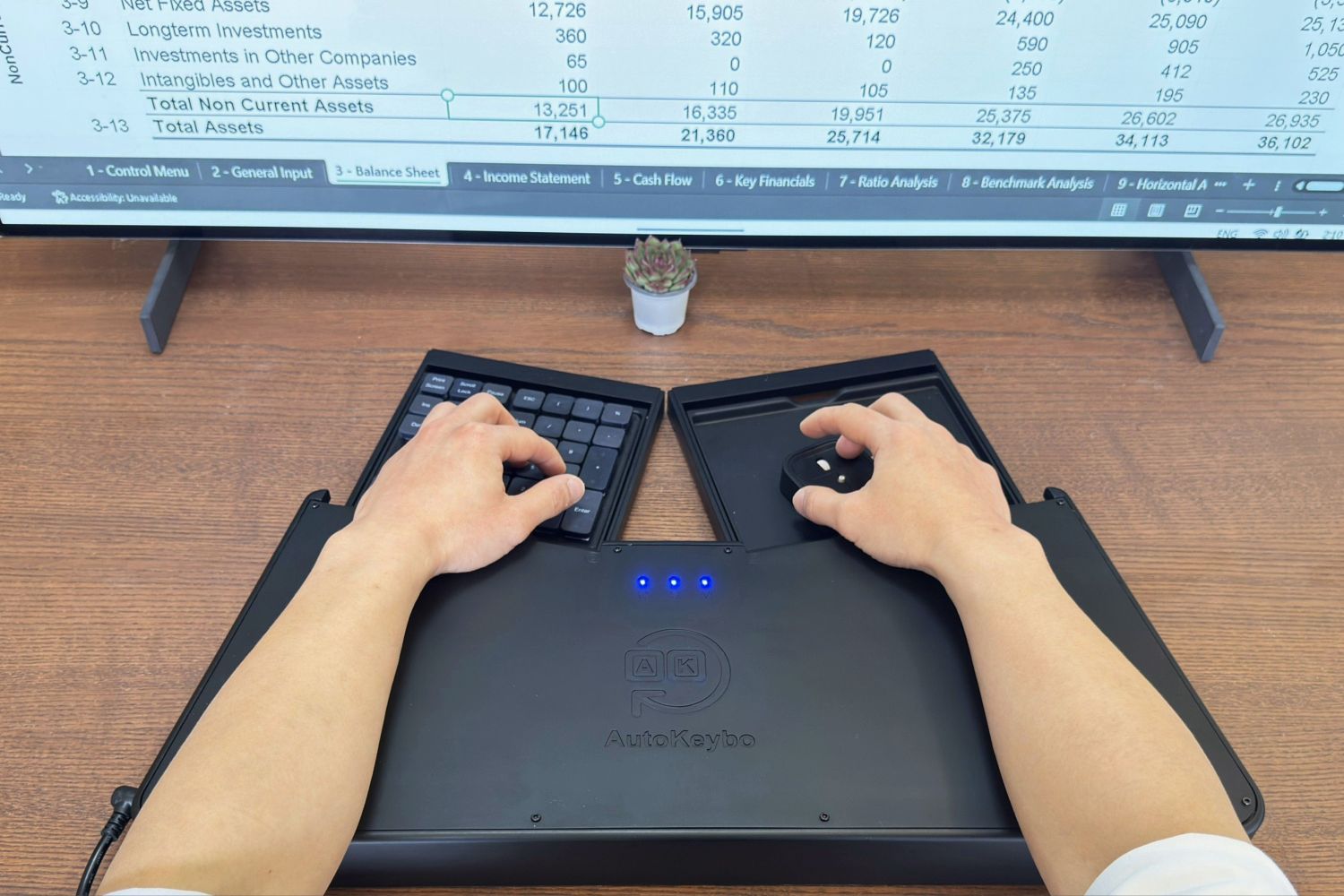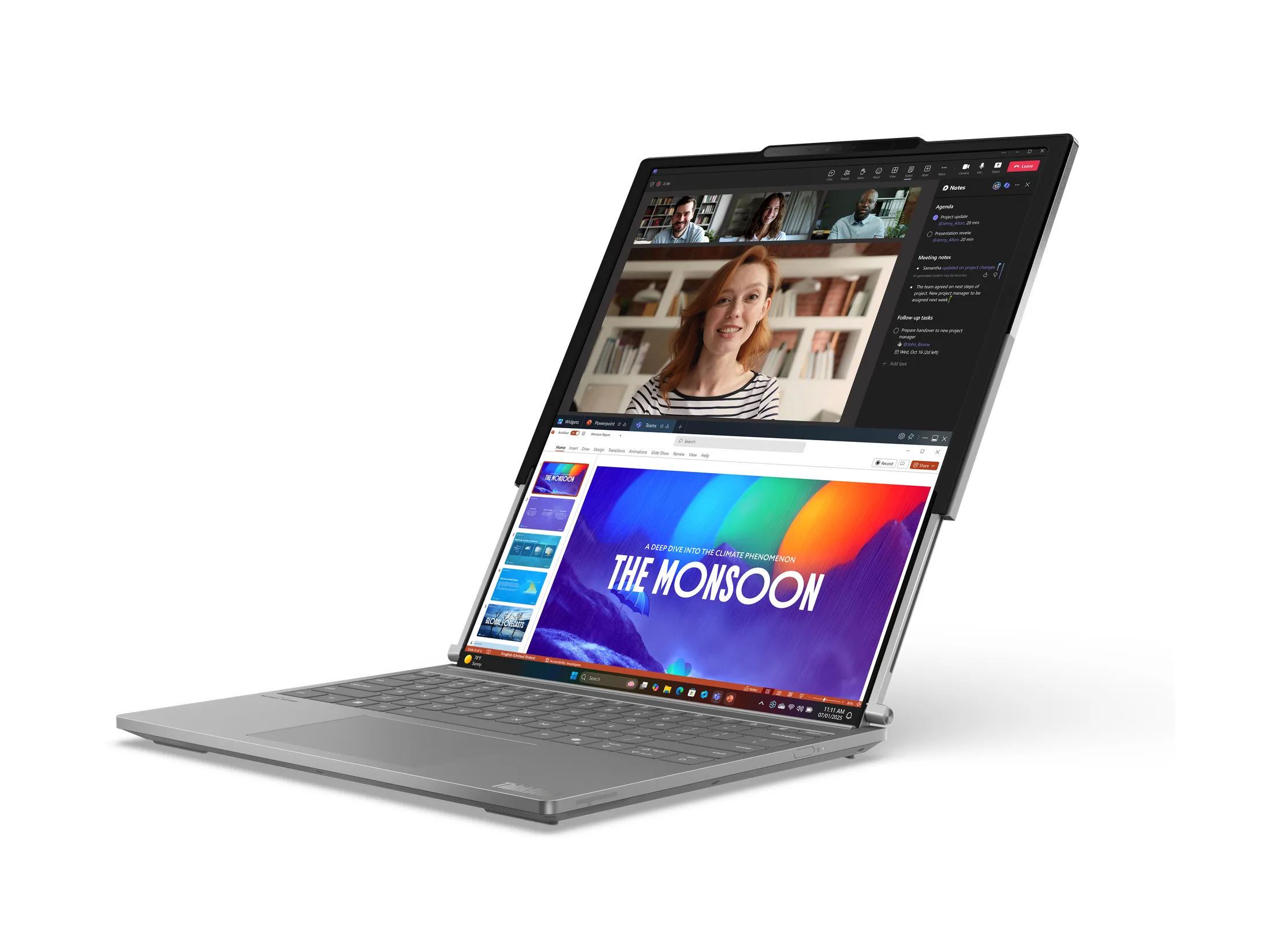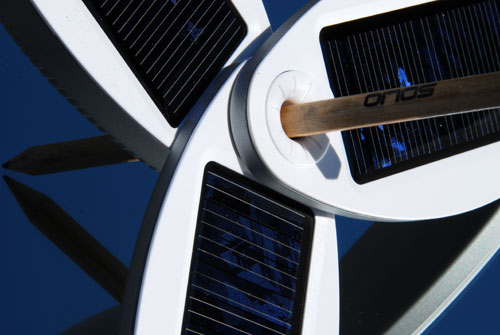
By Evan Ackerman
Solar power is definitely the new sexy when it comes to renewable sources of energy. The Solio solar charger combines form and function and is designed to charge just about any gadget you own, and look good while doing it.
Read the full extra-special Earth Day review, after the jump.
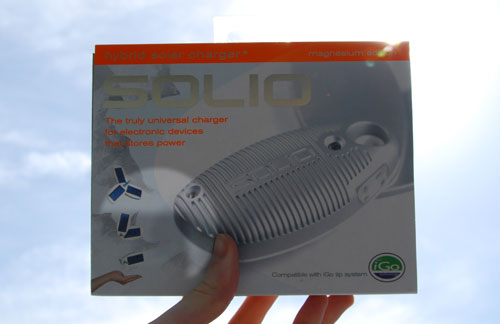
I got to take a look at the Solio Magnesium Edition, which is a portable hybrid solar charger. It’s called a “hybrid” because the internal battery can be charged with a wall charger, meaning you don’t have to depend exclusively on the sun for your juice. This turns out to be a more valuable feature than you might think, even as it does sort of diminish the the whole solar power concept. But don’t worry, it’s still really, really cool.
The Solio Magnesium Edition (Solio Mg for short) came in a mostly recycled box along with a female USB adapter, iGo adapter, AC charger and four international plug adapters (UK, EU, OZ), a carrying bag made out of hemp, and a pencil (more on that later).
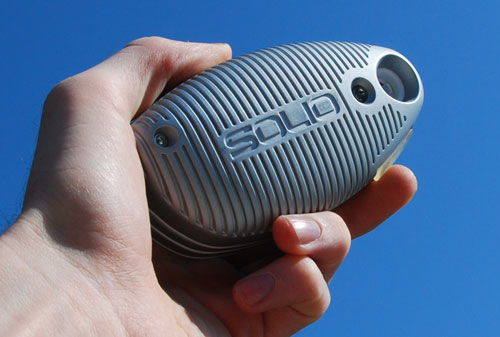
The Solio itself is silvery and streamlined, with the majority of the case made out of (you guessed it) magnesium, which is sturdy and lightweight. It’s about the size of a cell phone at two or three times the thickness, measuring 4.72 x 1.34 x 2.56 in (120 x 34 x 63.5 mm) and weighing a solid 6.38 oz. (179g). It’s so fat thanks to the internal lithium battery (good for 300-500 cycles), which stores 1800mAh of electricity for up to a year. The back of the Solio has one single translucent button which both controls the unit and shows the battery level with blinking LEDs. On the side are covered ports for the AC in and mini USB out; all of the adapter cables use a mini USB adapter, or if your device uses one already, you can plug it straight in.

The genius (and let’s face it, beauty) of the Solio is apparent when you unfold it. The hole in one end when it’s collapsed is actually a hinge around which three petals rotate, each one with a separate solar panel, effectively maximizing the surface the Solio is able to present to the sun. I don’t know a whole lot about solar panels, but these are pretty cool… They’re covered in thick looking transparent plastic, and have random deep blue shiny patterns on them
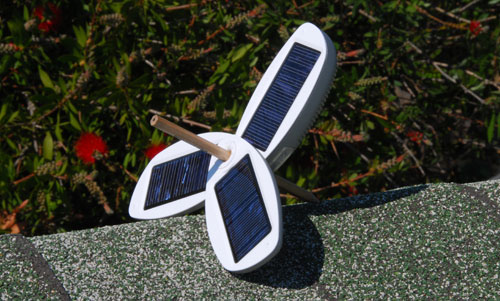
The Solio is absurdly simple to operate. Simply unfold it, stick a pencil through the center hole prop it up, and position it so that the Solio is staring straight at the sun. Go relax for a while, and when you come back, juice will magically have appeared in the battery. The Solio works best in unobstructed full sunlight; using it behind a window or if it’s cloudy will have a substantial effect on its efficiency. When you’re done, just fold it back up.
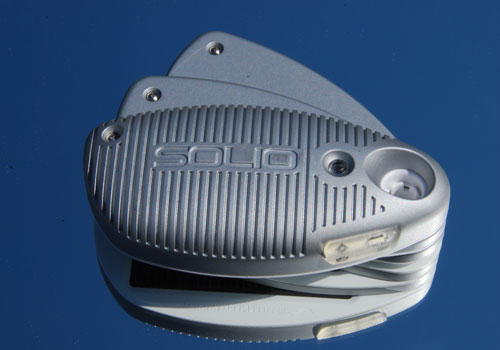
In order to tell how full the battery is, just press the button on the back. A green LED will blink one time for each fifth of a full charge in the battery… 5 blinks equals full, 1 blink equals one fifth full, and so on. A red LED indicates a drained battery.
From the testing I was able to do, leaving the Solio propped up for 4 hours unattended in more or less full sun here in San Francisco equaled one blink of charge, or about 360 mAh. The Solio literature suggests that 10-12 hours of full sun results in a full charge, which I guess might be possible if you’re on a mountain, on the equator, at the equinox, when the weather is flawless and you’ve got some way of constantly optimizing the angle of the Solio. When Solio says “10-12 hours of full sun,” they mean 10-12 hours of the optimum sunlight which occurs between 10am and 2pm. So two or three days is more realistic, and even then, you’ll probably have to have the Solio well positioned for the best part of a cloud free day. Charging from the AC adapter, by the way, takes about 6 hours.
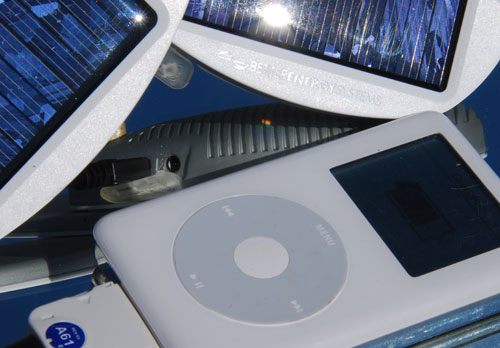
To charge something with the Solio, just plug it in and push the button on the back, it’s as easy as that. Charging a nearly dead iPod from 5 blinks on the Solio’s battery indicator left me with 2 blinks, and topping off my cellphone sucked up about one blink. If your gadgets don’t charge via the mini USB port or the included full size female USB adapter, you have a couple options. You can either buy specific tips directly from Solio for about $10 each (a coupon for a free one is included in the box), or you can use the included iGo adapter and your own iGo tips (they’re available for $10ish at RadioShack among other places), which work on a variety of other power systems like the powerXtender. Note that the Solio will not charge more than one thing at a time, even if you have a splitter cord.
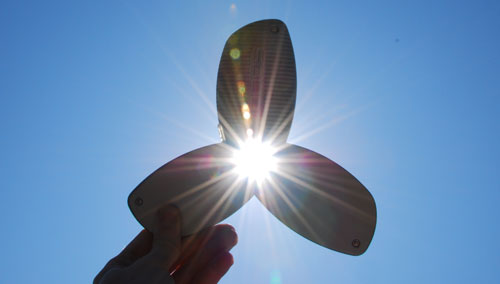
Basically, in order to use the Solio as a pure solar charger, you have to a.) live somewhere with consistently good weather and b.) think ahead about how much you’ll be using your gadgets, and when. But you can do it, and even if it doesn’t make a huge impact on the environment, it is making a statement, and I have to say, it makes you feel kinda good… You sit this little thing outside for a while and bam, you can charge your iPod.
I think it would be brilliant if somehow the Solio could be combined with the iGo powerXtender that I reviewed a few weeks ago. A big downside of the Solio is that there’s no way to get instant power whenever you need it. Now, if the Solio utilized removable, rechargeable AA batteries instead of the lithium battery pack, it could be used as a solar gadget charger, a rechargeable battery charger (with or without the power adapter), AND you could always toss a set of normal AAs in there if you needed some juice in a hurry. Hey, I can dream, can’t I?
Pros-
-It’s solar power! Free envirotricity, man
-Very solidly built and well designed
-Mindless to use and AC power is always an option
-Comes will all kinds of adapters (including iGo), a hemp bag, and a pencil, woohoo!
-Single button and LEDs do everything you need
-Manufactured ethically and with minimal environmental impact
Cons-
-$200? Are they serious?
-Pocket solar power is pretty slow
-Requires adapter tips, sold separately
Overall-
One of the best handheld solar charger options on the market, but you’ll pay for the fancy magnesium case.
If you like the idea of the Solio, you should think twice about getting the magnesium edition unless you’ve got money to burn, and if you have money to burn, how about planting some trees in a rainforest somewhere? The “classic” version weighs less, comes in four fun colors, is $100 cheaper, and is functionally the same except for the plastic outer case and a slightly diminished battery capacity (1500mAh vs. 1800mAh). It also might be a bit trickier to use the iGo tips, but it’s still workable, and $100 can be better spent saving the world in other ways.
[ Solio Magnesium ]









